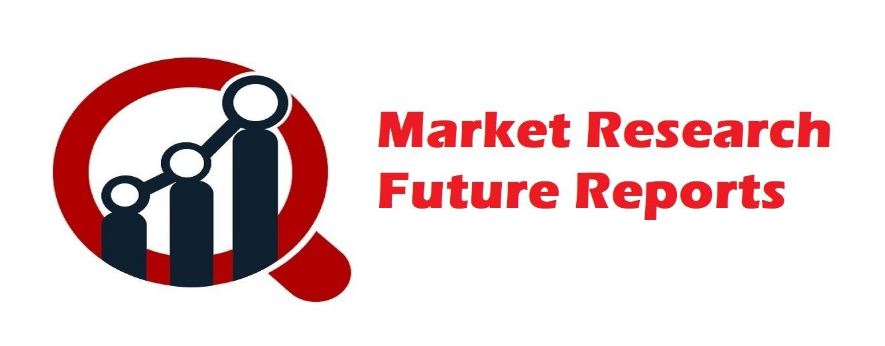Sustainability in the Biologics Market Balancing Environmental Responsibility with Business Growth

The biologics market size was valued at USD 425.5 billion in 2022 and is projected to grow from USD 457.83 Billion in 2023 to USD 710.53 billion by 2030, exhibiting a compound annual growth rate (CAGR) of 7.6% during the forecast period (2023 - 2030).
Market Overview:
Biologics stand out as revolutionary therapeutic agents, spearheading a paradigm shift in the treatment of various diseases. Unlike traditional pharmaceuticals synthesized from chemical compounds, biologics are derived from living organisms or their components, offering targeted and often more effective treatment options. As we delve into the dynamic landscape of the biologics market, it becomes evident that this sector is not only witnessing remarkable growth but also reshaping the future of healthcare.
The Biologics Boom:
Several factors fuel the exponential growth of the biologics market. Foremost among these is the increasing prevalence of chronic diseases such as cancer, autoimmune disorders, and infectious diseases. Biologics offer a personalized approach to treatment, addressing the underlying mechanisms of these complex diseases with greater precision.
Moreover, advancements in biotechnology and genetic engineering have accelerated the development and production of biologics, enabling pharmaceutical companies to bring innovative therapies to market more rapidly. This technological prowess has not only enhanced the efficacy of biologics but also optimized their safety profiles.
Additionally, growing investments in research and development, coupled with favorable regulatory policies, have fostered a conducive environment for the expansion of the biologics market. The emergence of biosimilars, which are highly similar versions of approved biologics, has further intensified competition and widened patient access to these transformative therapies.
Therapeutic Domains:
The application of biologics spans across a diverse spectrum of therapeutic domains, ranging from oncology and immunology to neurology and beyond. In oncology, monoclonal antibodies (mAbs) have revolutionized cancer treatment by targeting specific molecules on cancer cells, thereby minimizing damage to healthy tissues. Similarly, in autoimmune disorders such as rheumatoid arthritis and psoriasis, biologics offer targeted immunomodulation, providing relief to patients who are refractory to conventional therapies.
Furthermore, the advent of gene and cell therapies has opened up unprecedented avenues for treating genetic disorders and degenerative conditions. These cutting-edge modalities harness the power of genetic engineering to correct underlying genetic defects or bolster the regenerative capacity of damaged tissues, heralding a new era in personalized medicine.
Market Dynamics:
While the biologics market presents immense opportunities, it also confronts several challenges. One such challenge is the high cost associated with biologic therapies, which can pose a barrier to patient access and healthcare sustainability. The intricate manufacturing processes involved in producing biologics, along with the need for stringent quality control measures, contribute to their elevated prices.
The complexity of biologic molecules raises concerns regarding immunogenicity and long-term safety. Although extensive preclinical and clinical evaluations are conducted to assess the safety and efficacy of biologics, unforeseen adverse events may arise post-approval, necessitating ongoing pharmacovigilance and risk management strategies.
The patent expiry of blockbuster biologics paves the way for the entry of biosimilars, intensifying competition and prompting manufacturers to adopt innovative pricing and marketing strategies to maintain market share.
Market Segmentation:
The Biologics market is segmented into various product and service categories. These include Monoclonal Antibodies, Interleukins, Vaccines, Growth Factors, Gene Therapy, and others. Each category offers distinct therapeutic benefits and applications. In terms of disease indication, Biologics cater to a range of conditions such as Rheumatoid Arthritis, Psoriasis/Psoriatic Arthritis, Cancer, Diabetes, and other ailments. This segmentation reflects the diverse therapeutic landscape and the potential of Biologics to address various medical needs across different patient populations.
Key Players:
The Biologics Market Players, Including Abbvie Inc., Pfizer Inc., Astrazeneca, Novartis Ag, Hoffman-La Roche Ag, Bayer Ag, Amgen, Sanofi, Eli Lilly And Company, Glaxosmithkline Plc, Celltrion Inc., Samsung Biologics Co. Ltd., And G. Chem Ltd. These Companies Are Prominent Entities In The Realm Of Biologics, Contributing To Advancements In Healthcare Through Research, Development, And Production Of Innovative Biopharmaceutical Products. Their Collective Efforts Shape The Landscape Of Biologics, Addressing Diverse Medical Needs And Enhancing Treatment Options Worldwide.
Regional Analysis:
The regional outlook for biologics, measured in USD billion from 2018 to 2030, encompasses North America, Europe, Asia-Pacific, and the Rest of the World. In North America, the United States and Canada are key players. Europe's market includes Germany, France, the UK, Italy, Spain, and the rest of the region. Meanwhile, Asia-Pacific features China, Japan, India, Australia, South Korea, and the rest of the region. The rest of the world encompasses the Middle East, Africa, and Latin America.
Future Prospects:
The future of the biologics market growth appears promising, propelled by ongoing innovations and collaborations across academia, industry, and regulatory agencies. Advancements in protein engineering, bioinformatics, and computational biology hold the potential to enhance the design and optimization of biologic therapeutics, paving the way for next-generation biologics with improved efficacy and safety profiles.
The integration of artificial intelligence and machine learning algorithms into drug discovery and development processes promises to expedite the identification of novel drug targets and predictive biomarkers, thereby streamlining the path to market approval.
The advent of advanced manufacturing technologies such as continuous bioprocessing and modular production facilities is poised to revolutionize biologics manufacturing, enabling greater flexibility, scalability, and cost efficiency.
About Related Reports:
Type-1 Diabetes Treatment Market
Active Pharmaceutical Ingredients Market
Healthcare Enterprise Software Market
- Questions and Answers
- Opinion
- Motivational and Inspiring Story
- Technology
- Live and Let live
- Focus
- Geopolitics
- Military-Arms/Equipment
- Sicurezza
- Economy
- Beasts of Nations
- Machine Tools-The “Mother Industry”
- Art
- Causes
- Crafts
- Dance
- Drinks
- Film/Movie
- Fitness
- Food
- Giochi
- Gardening
- Health
- Home
- Literature
- Music
- Networking
- Altre informazioni
- Party
- Religion
- Shopping
- Sports
- Theater
- Health and Wellness
- News
- Culture

